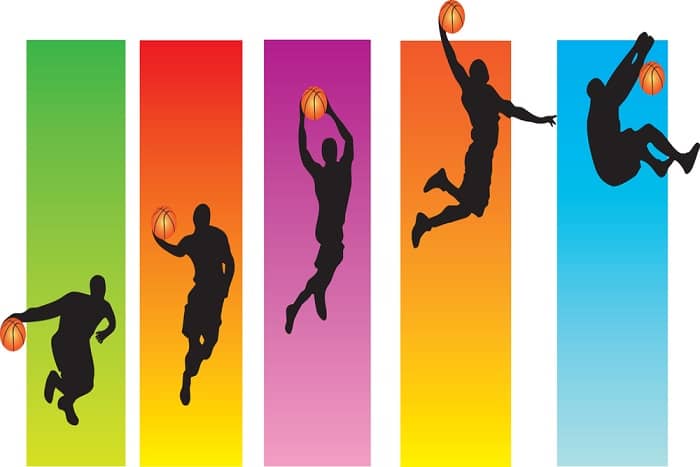- Is Basketball A Winter Sport – A Definitive Answer [2023] - January 27, 2022
- Why Do Basketball Coaches Wear Suits – Full Answer [2023] - January 25, 2022
- Can You Use Basketball Shoes For Wrestling? (No, Here’s Why) - January 6, 2022
Fans of basketball will refer to them in many ways: a lay up, a slam dunk, a fadeaway jump shot, or a three-pointer. But the official term that covers all of these is called a field goal.
What is a field goal in basketball? A field goal is any basket that is scored in the opposition’s hoop that is not a free throw. Another way to look at it is that a field goal in basketball is worth either two or three points, while free throws are only worth a single point.
Field goals are also scored during the actual in-game play in basketball, whereas free throws are shot during a stoppage in the action.
Do not get them confused with kicking a field goal in American football though, as these basketball field goals are scored while using your hands and not your feet!
Contents
What Is a Field Goal in Basketball?
Basketball is an exhilarating game to watch, with back and forth action and a lot of scoring by both teams. Anytime you see a team score a basket during the play, they are scoring a field goal.

Field goals can be scored right at the rim of the hoop or as far back as your own side of center. In basketball, field goals are the main scoring method and account for a bulk of the points scored by both teams.
How Many Points is a Field Goal Worth in Basketball?
This depends on where the field goal is scored from on the court itself. If a field goal is shot in from behind the three-point arch, then the field goal is worth three points.
Three points is the maximum number of points you can get for any one shot in basketball under the standard NBA rules. You can be directly behind the three-point arch or way back under your own basket.
In either situation, or anywhere in between, the field goal scored will only be worth three points no matter how far back you are.
Any other field goal scored, which can also be defined as the area inside the three-point arch, is worth two points per basket.
Why is it Called a Field Goal in Basketball?
For a game that is played on a court, it is interesting that the word chosen to describe the playing surface is the field. In basketball, a slang term for the court of play is the field.

Why is a basketball court called a field?
It is just something that has been passed down in the basketball vernacular for decades now, so calling the court the field of play has stuck around into today’s game.
It is always humorous to think of how different field goals are in American football and basketball, despite sharing the same name.
So next time someone asks you ‘what is a field goal in basketball?’, you can politely tell them it is any basket scored from the field of play.
As a related read, don’t miss learning what does PF mean in basketball.
What is Field Goal Percentage and How Do You Calculate It?
As the name suggests, field goal percentage keeps track of just how frequently players can score in relation to the number of shots they take in a game.
Players with high field goal percentages are often considered elite players, although this can be skewed slightly by position.
Historically, centers have higher field goal percentages because a lot of their game is played right close-in to the hoop.
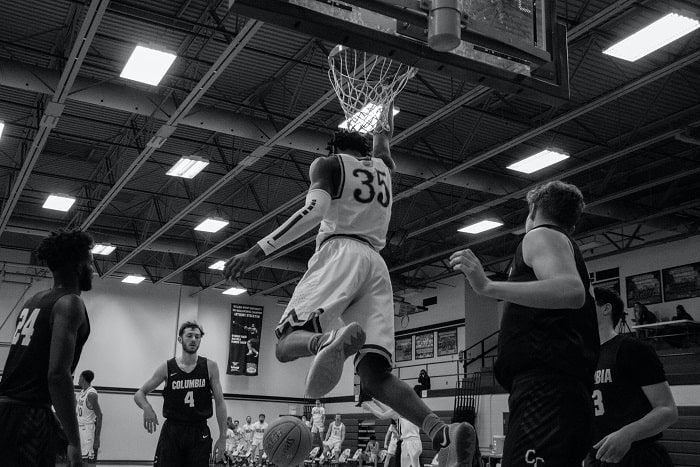
Obviously if you are spending that much time around the hoop, your field goals are going to be easier to score, giving you a higher field goal percentage.
Guards traditionally have lower field goal percentages as they often play further away from the hoop and shoot more three-point shots, which naturally have a lower tendency of scoring.
Calculating field goal percentage is very straightforward and is an essential metric in showing how valuable a player is to their team on the offensive side of the ball.
To find a player’s field goal percentage, simply divide the total number of shots made by the total number of shots taken:
Total Number of Shots Made
_____________________________ = FG%
Total Number of Shots Taken
What is a Good Field Goal Percentage in Basketball?
Again this totally depends on the position you play on the court. In general, a good NBA field goal percentage for a center is over 0.500 or 50%.
When a majority of your shots are layups, slam dunks, or post ups, a higher field goal percentage is certainly justified. For guards, a field goal percentage of between 0.400 and 0.450 or 40-45% is considered high.
If you want a measuring stick, Steph Curry who is widely considered the best shooter in NBA history, has a field goal percentage of 0.431 or 43.1% so far in the 2021 NBA season.
- 0.500 (50%) or higher for centers who play close to the hoop.
- 0.400-0.450 (40-45%) for guards who play further back from the hoop and shoot more three-point attempts, which naturally have a lower success rate.
Are Free Throws Included in Field Goal Percentage?
The answer to this is no. Free throws are not considered to be field goals and do not count towards a player’s field goal percentage. Free throws can arise from a few different reasons:
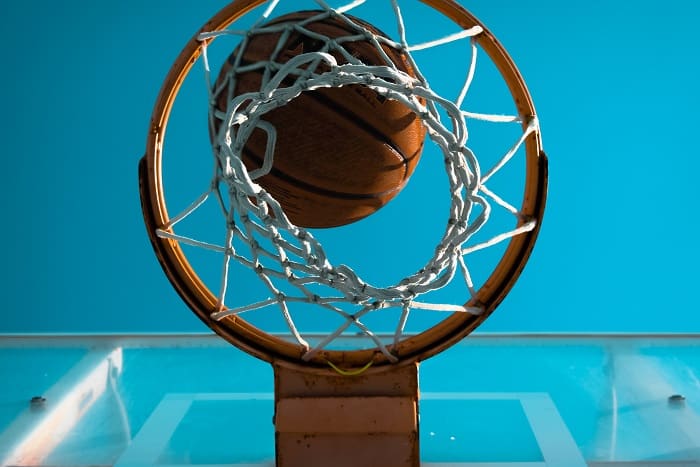
- A shooting foul will results in free throws:
- Two free throws for a two-point field goal attempt
- Three free throws for a three-point field goal attempt
- One free throw if the field goal attempt scores
- A technical foul is called against a player, team, or coach
- One free throw awarded for each technical foul
- Free throws are awarded after more than four non-shooting personal fouls are called against a team in a given quarter.
So now, if anyone ever asks you “is a free throw the same as a field goal?”, you know the answer!
Another factor to take into account is that the game clock stops for free throws and field goals are only scored during the action of the game.
Some players are so good at free throw shooting, that it would boost their field goal percentage to an artificial level.
This is another reason why free throws are not included in field goal percentage, and also why we measure free throw percentage as a separate statistic.
What is Effective Field Goal Percentage?
Effective field goal percentage or eFG% as it is also known, is a more in depth way of calculating a player’s true field goal percentage.
Watch the video below for more info:
This metric takes into account three-point field goals that are worth more in points but are less frequently scored. The formula for eFG% is as follows:
eFG% = FG + (0.5 x 3P)
_______________
FGA
In this equation:
FG = the number of field goals made
3P = the number of three-point field goals made
FGA = total field goal attempts
As you can see it is just a slight variation of the regular field goal percentage formula, but it does allow a more realistic representation of how effective a shooter really is.
What is True Shooting Percentage?
True shooting percentage or TS% is the ultimate metric for how a player performs in all facets of shooting the ball.
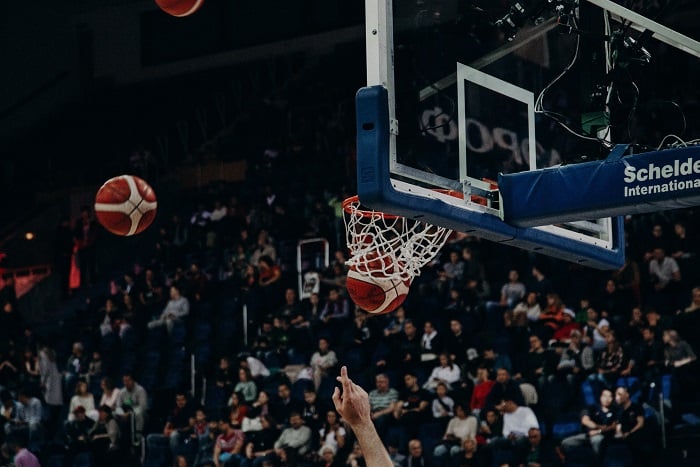
The TS% measures field goal percentage, three-point field goal percentage, and free throw percentage all in one metric. The formula for TS% is as follows:
TS% = PTS
_______________
2[FGA + (0.44 x FTA)]
In this equation:
PTS = total points scored
FGA = total field goal attempts
FTA = total free throw attempts
Two-Point Field Goal Types
A majority of field goals that are scored in any given basketball game are two-point field goals. Why is this the case?
To be blunt, two-point field goals are much easier to score as they are shot much closer to the basket.
Since they have such a higher percentage of scoring, teams will often shift their strategy towards scoring two-point field goals closer to the hoop.
Let’s take a look at some of the different ways to score two-point field goals in basketball!
The Jumpshot
The classic two-point field goal is the jumpshot: simple to execute but difficult to master. When done correctly, a jumpshot can be nearly unguardable, especially when the shooter pulls up off the dribble.
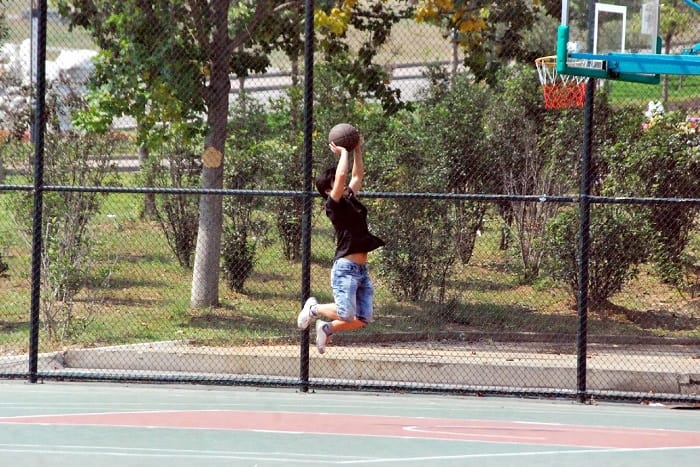
There are many variations including the fadeaway jumpshot, where the shooter leans away from the defender in order to shoot the ball around the block.
The two-point jump shot can be taken from anywhere on the floor that is inside of the three-point arch.
The Layup
The layup happens right in close to the basket and is one of the easiest field goals to score in basketball. A layup is generally a one-handed shot that takes place within inches of the actual hoop.
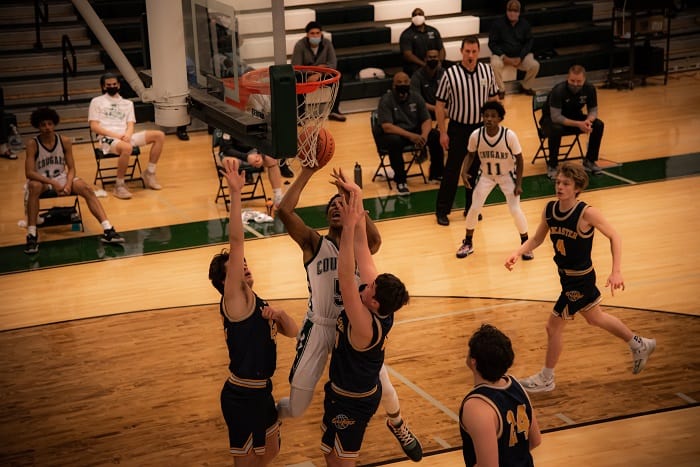
A common way to execute a layup is to bank the ball in off the window of the backboard.
There are more complex variations which include a finger roll layup where a player rolls the ball into the hoop using the tips of their fingers.
The Slam Dunk
One of the more popular two-point field goals, a slam dunk, is when a player slams the ball into the basket with one or both hands touching the rim.
There are plenty of different ways to slam dunk the ball including a reverse dunk, an alley-oop dunk, and a tomahawk dunk.
One of the most popular events in the NBA season is the slam dunk contest at the NBA All-Star game, where players get to show off their most creative styles of slam dunks.
The Hook Shot
This type of two-point field goal is sadly not utilized as much as it was before. The hook shot is a one-handed shot that usually occurs within a few feet of the basket.
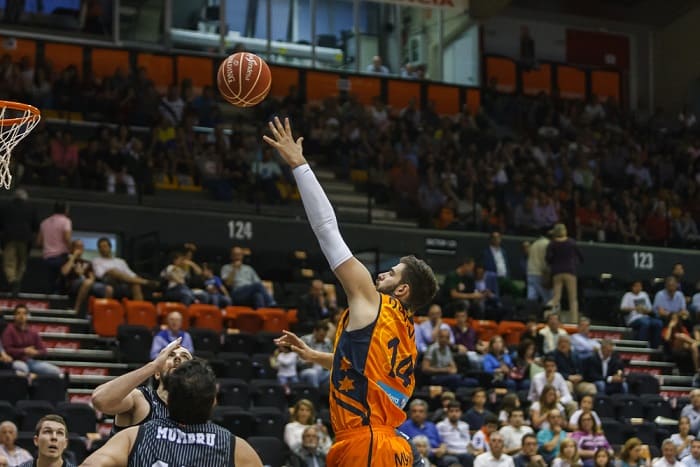
It is a move that is often used by centers or power forwards to gain a height advantage over their defender. It is also a popular move to use down in the post where bigger players do most of their work.
The Floater
Probably the most difficult type of two-point field goal to score on a regular basis, the floater is another under utilized part of a scorer’s arsenal.
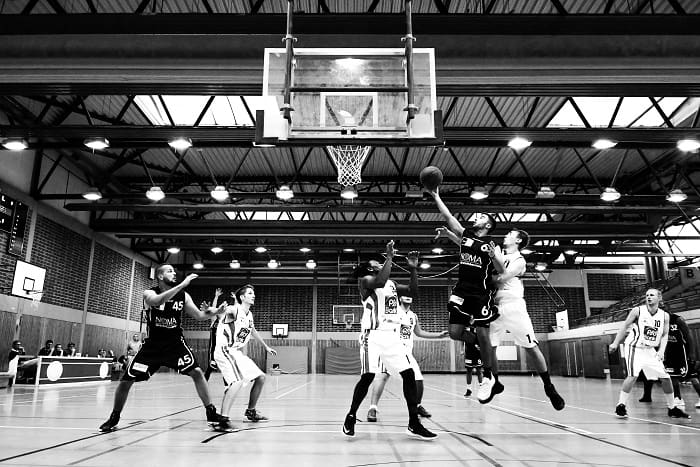
A floater is similar to a layup but from further out. Most players like to put a bit of arc on the ball, which helps to keep it away from a rim protector trying to block the shot.
Another word for floater is a teardrop shot, and is a popular move by point guards like Chris Paul.
Three-Point Field Goals
Three-point field goals are among the most exciting plays in the sport of basketball. In the NBA, the three-point arch is 22 ft 9 inches in the corners and 23 ft 9 inches anywhere else along the arch.
The NCAA and WNBA use slightly shorter distances for the three-point lines. Any shot taken from behind that arch is a field goal worth three points.
Traditionally it has been guards that shoot most of the three-point field goals in basketball, but recently wing players and even centers have become much better at shooting three-point field goals as well.
Who Are The Best Scorers from the Field in the NBA?
Are we talking two-point field goals or three-point field goals?
For two-point field goals, centers have a distinct advantage over most other positional players due to the fact that their field goals are so close to the basket.
They dominate the leaderboard for true shooting percentage and effective field goal percentage.
But in terms of who can score two-point field goals better than anyone else, it is likely between Kevin Durant of the Brooklyn Nets or Giannis Antetokounmpo of the Milwaukee Bucks.
When it comes to three-point field goals, there is only one name that stands alone: Steph Curry.
Recently Curry officially became the all-time NBA leader in three-point field goals made with 2,974, surpassing Hall of Fame player Ray Allen.
There are plenty of players who shoot three-point field goals well, but none of them can compare with the dominance of Steph Curry.
Who Has the Most Field Goals in NBA History?
This NBA record belongs to the great Kareem Abdul Jabar who scored 15,837 field goals in his illustrious NBA career.

To realize just how incredible of a record this is, Abdul Jabar’s number is over 2,300 more than second place Karl Malone, and nearly 2,800 more than third place Lebron James.
Rounding out the top five in this category is Wilt Chamberlain at four and Michael Jordan in fifth place.

